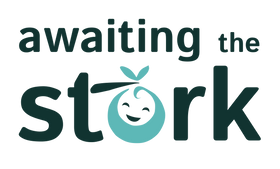Understanding preeclampsia: a guide for expecting and new mothers

Pregnancy is a beautiful journey filled with excitement, anticipation, and sometimes, a few challenges. One such challenge that can arise is preeclampsia, a potentially life-threatening condition that affects both mother and baby. At Awaiting the Stork, we are committed to providing not just products but also valuable information to help you navigate this important phase of your life. In this post, we will delve into what preeclampsia is, its impact on the baby, how to avoid it, recognize it, and manage it effectively.
What is Preeclampsia?
Preeclampsia is a condition that typically occurs after the 20th week of pregnancy and is characterized by high blood pressure and signs of damage to another organ system, often the kidneys. If left untreated, preeclampsia can lead to serious, even fatal, complications for both mother and baby.
Impact on the baby
If an expecting mother develops preeclampsia, the baby is at risk of several complications, including:
- Premature birth: Preeclampsia can lead to preterm delivery, which carries risks for the baby's health, including breathing problems, developmental delays, and other long-term health issues.
- Low birth weight: Babies born to mothers with preeclampsia are often smaller than average due to restricted blood flow and nutrients.
- Placental abruption: This condition, where the placenta separates from the uterine wall before delivery, can deprive the baby of oxygen and nutrients.
How to avoid preeclampsia
While there is no guaranteed way to prevent preeclampsia, you can take steps to lower your risk:
- Maintain a healthy diet: Eat a balanced diet rich in fruits, vegetables, whole grains, and lean proteins.
- Regular exercise: Engage in moderate exercise as recommended by your healthcare provider.
- Prenatal care: Attend all prenatal appointments for monitoring and early detection of any issues.
- Manage pre-existing conditions: If you have chronic high blood pressure, diabetes, or other conditions, work closely with your healthcare provider to manage them effectively.
Recognizing the signs
Early detection is crucial in managing preeclampsia. Here are some warning signs to watch out for:
- High blood pressure: A blood pressure reading of 140/90 mm Hg or higher.
- Protein in urine: Detected during routine prenatal visits.
- Severe headaches: Persistent and not relieved by over-the-counter pain relievers.
- Vision changes: Blurred vision, seeing spots, or temporary loss of vision.
- Upper abdominal pain: Typically under the ribs on the right side.
- Sudden weight gain and swelling: Especially in the face and hands.
Vaginal delivery and preeclampsia
Whether or not you can have a vaginal delivery with preeclampsia depends on the severity of your condition and the health of your baby. In many cases, a vaginal delivery is possible, but sometimes an early delivery via cesarean section (C-section) may be necessary to protect both mother and baby.
Chronic high blood pressure and preeclampsia
If you have chronic high blood pressure, your risk of developing preeclampsia is higher. It's essential to have your blood pressure closely monitored throughout your pregnancy and to follow your healthcare provider's recommendations to manage it effectively.
The importance of understanding preeclampsia
Understanding preeclampsia is crucial for expecting and new mothers. Early detection and management can significantly improve outcomes for both mother and baby. By staying informed, attending regular prenatal check-ups, and recognizing the warning signs, you can take proactive steps to ensure a safe and healthy pregnancy.
At our store, we are here to support you with the products and information you need for a healthy pregnancy and postpartum period. Remember, your health and your baby's health are paramount, and taking steps to understand and manage conditions like preeclampsia can make all the difference.
Stay informed, stay healthy, and cherish every moment of this incredible journey.


